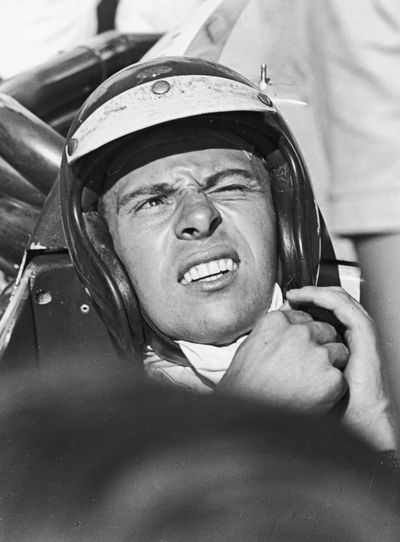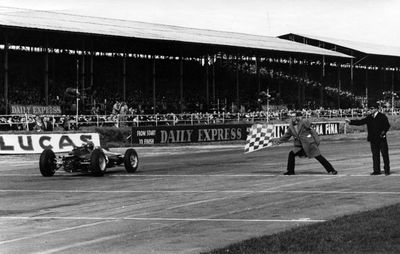Jim Clark

Personal Information

About Jim Clark
Jim Clark F1 Career Overview
Known for his sheer versatility and sheer skills behind the wheel of the challenging machinery that defined F1’s burgeoning 1960s era, Jim Clark was a title winner in 1963 and 1965 but was denied the opportunity to prove his best was still yet to come.
Career Stats
Latest News
Full Biography
Jim Clark F1 Career Overview
Known for his sheer versatility and sheer skills behind the wheel of the challenging machinery that defined F1’s burgeoning 1960s era, Jim Clark was a title winner in 1963 and 1965 but was denied the opportunity to prove his best was still yet to come.
Indeed, there is little doubt Clark was capable of building on his two F1 World Championship title wins had he not been killed - aged 32 - in a Formula Two accident at the Hockenheimring.
In a career devoted to Team Lotus, with whom he raced solely during his eight full seasons of F1 competition - as well as sportscar and touring car events - Clark was struck down in his prime in West Germany after a suspected tyre failure on 7 April 1968.
He achieved 25 victories in only 72 starts, while he remains one of only a handful of F1 drivers to have also won the Indianapolis 500.
Jim Clark F1 Career - Team-by-Team
Lotus: 1960-1968
Beginning his career in hillclimb and rally events, Clark made the switch to single-seaters - while keeping his foot in other disciplines - in Formula Junior before being primed as the successor for Isle of Man TT-bound John Surtees at Lotus for the 1960 F1 season.
Making his debut in the Dutch Grand Prix, Clark picked up points during his second race in Belgium before landing on the podium for the first time with a drive to third in the Portuguese Grand Prix, results that lifted him to a creditable tenth in the standings.
His form took another step forward in 1961 with podiums at Zandvoort and Reims, but the season was blighted by being involved in a serious accident during the Italian Grand Prix when a collision with Wolfgang von Trips prompted the German’s Ferrari to vault the barrier and into the crowd, killing 15 spectators in what remains one of the worst tragedies to befall motorsport.
Clark’s maiden win came in the 1962 Belgian Grand Prix, success he’d follow up with victory on home soil at Aintree and at Watkins Glen to finish runner-up in the standings behind countryman Graham Hill.
Clark found his form in 1963 with a dominant performance that yielded a then-record seven wins from only 10 races, a marker that wasn’t broken until 1988 when Ayrton Senna won eight times, albeit with 16 events in which to achieve it. It remains the most dominant season performance of a driver in the history of F1 when wins are measured against starts made.
The Briton carried his form through to 1964 with three wins that set him on course for championship glory in the Mexican finale, only for an oil leak close to the finish to slow him and drop him to fifth at the finish, allowing the returning Surtees to clinch the title instead,
Clark would go on to win his second F1 World Championship title in 1965 after winning six of the first seven races, the only anomaly being the Monaco Grand Prix he had skipped in order to race at the Indy 500, which he nonetheless went on to win.
Lotus lost its competitive edge in 1966 when the FIA introduced a new 3.0-litre formula and the British team was out-performed in the development race. Clark didn’t score a point until Round 4 and reliability was poor, though he did add to his victory tally in the United States.
HIs eighth and final full season in 1967 saw Clark struggle with the Lotus 43 initially - leading to a brief switch back to the Lotus 33 he won the 1965 crown with - before the launch of the new Lotus 49 allowed him to reclaim his superiority with four wins over the remainder of the season, lifting him to third overall,
Jim Clark's Death
It set up what many expected to be Clark’s third title tilt in 1968, which he kicked off in style by winning the South African curtain raiser. However, during the prolonged five month gap between rounds one and two, Clark was killed during Formula Two race at Hockenheim (the Deutschland Trophäe), which he had only entered at the last minute.
On the fifth lap of the first heat, Clark crashed heavily after veering off track, the cause of which was never formally identified but believed to have been down to a tyre blowout. He suffered a broken neck and a skull fracture and died before reaching hospital.
He was aged 32.
Jim Clark - Beyond F1
Though it was the norm for F1 drivers to supplement their duties racing in the World Championship with various non-championship F1 events or stints in the lower-powered but skill-honing Formula Two series, Clark was arguably the most prolific of them.
He started trophy F1 events over the course of his time in the sport, again always with Lotus, with wins including the Pau Grand Prix, the Imola Grand Prix, Lombank Trophy, the Syracuse Grand Prix, the Kannonlopet Trophy in Sweden.
He raced in the Indianapolis 500 five times and consolidated his 1965 victory with podiums in 1963 and 1966 too. He remains the only driver to win the F1 World Championship and the Indy 500 in the same year.
He regularly performed full seasons in the Tasman Series during the winter, winning the Australian and New Zealand-based series three times, he enjoyed success at the Le Mans 24 Hours, finishing third in 1960 and also competed in both the British Touring Car Championship and the RAC Rally of Great Britain, each time in a Lotus-Cortina.
He also competed in numerous Formula Two races with significant success, winning 13 races prior to his death.


